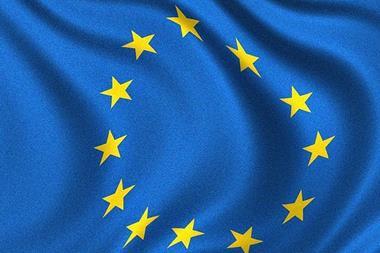As foreign investors look for new investment opportunities, mergers and acquisitions have flourished in CEE. This has clear implications for risk management, compliance and due diligence

Following the global downturn and the eurozone crisis of 2007-12, M&A activity surged in 2013 and the first half of 2014 in parts of Central and Eastern Europe (CEE) as recovery took root. Furthermore, the recent results of banking sector stress tests conducted by the European Central Bank showed solid results for banks – including their parent institutions – operating in several core CEE countries, notably the Czech Republic, Hungary, Poland and Slovakia.
A resultant expected rise in bank lending to corporates and small- and medium-sized enterprises should have a positive knock-on effect on M&A in the region as foreign investors look for new investment opportunities. This has clear implications for risk management, compliance and due diligence, given that regulatory reform continues in much of the region.
M&A activity in CEE has picked up since 2004, when several countries joined the EU. Despite blips in activity between 2008 and 2012, owing to a sovereign debt and growth crisis in the euro area, M&As picked up noticeably in 2013 and are likely to have exceeded expectations again in during 2014.
The recovery of growth prospects across Europe, greater credit provision, an improvement in CEE infrastructure owing to larger flows of EU funds and the re-emergence of solid levels of foreign direct investment (FDI) have all helped facilitate this trend.
TOP RISKS
- Consolidation in the CEE M&A market set to bring heightened compliance risks, despite significant progress made by individual countries to improve institutional flexibility and legal transparency
- Significant risks, including high levels of perceived corruption in business and politics, remain
- Importance of due diligence reinforced by lack of sophisticated compliance culture across much of CEE, owing to an inconsistently rigorous regulatory environment
- Investors must take steps to identify salient risks and mitigate pitfalls across political, regulatory and legal environments
- Rigorous due diligence on the seller or target business proven to be a particularly effective strategy for identifying and managing M&A integrity risks in CEE
Background
The value of M&A transactions surged by just over 35% in the first half of 2014 across eastern European emerging markets, compared to the same period a year earlier, according to recent estimates. Supporting this positive trend was a large number of deals recorded in Poland and the Czech Republic, which offer two of the largest M&A markets in the region, just behind the front runner, Turkey.
Rising investor interest – domestic and foreign – was apparent in several key market segments, notably real estate, energy, healthcare and telecommunications (including IT). In contrast to previous years, an increase in private equity (PE) investment and greater involvement of private investors from domestic markets signifies a new feature of these latest M&A deals.
Improvements in PE in parts of the region, coupled with better prospects for greater SME financing and government-backed incentive schemes, is good news for foreign investors. Despite evidence of increased domestic M&A originating from a large rate of wealthy local private investors across CEE, an assessment of the country of origin for numerous deals shows plenty of interest from countries such as Germany, the Netherlands and the US.
Two notable deals of 2014 were US-headquartered Henry Schein’s acquisition of an 80% stake in Poland’s Medivet SA, a local distributor of animal health products, and Deutsche Telekom’s purchase of the remaining 40% stake in T-Mobile Czech Republic.
Challenges ahead
M&A, which involves devising growth strategies for newly acquired assets, is always a risky business involving complex deals in particular geographical climes. This is particularly true in CEE countries, despite the gigantic strides made by individual countries to improve institutional flexibility and legal transparency since their accession to the EU in 2004.
Distinct challenges therefore remain for foreign investors looking to buy and sell assets, company shares and target businesses in this part of the world, which is home to unique local market conditions. The prospect of crowding out the marketplace with local investors, overpricing of assets by domestic target companies and ensuring good returns signify just three micro-problems facing the acquiring business or investor. The others come in the form of potentially significant macro hurdles or business risks:
- reputational risk by association (via direct business partners and counterparties);
- corruption risk;
- regulatory burdens; and
- significant levels of state involvement in pockets of the market.
All four areas relate to the buying side of M&A deals and signify business, rather than purely financial, risks. Financial risk is less of an issue, given the relative stability and liquidity of the banking systems in CEE. Yet, all of the areas above have the potential to affect the outcome and growth strategy inherent in M&A deals.
These risks are present in several notable areas, which straddle the political, regulatory and legal environments across CEE, including:
- significant levels of perceived corruption in business and politics;
- in turn, the blurred line between politics and business leads to heightened corruption risk;
- widespread red tape and old-fashioned bureaucratic procedures in business operations;
- heavy administrative burdens arising in part from unnecessarily complex systems of corporate taxation that apply to certain types of businesses;
- clunky legal systems, particularly relating to local courts, which tend to be politicised and bureaucracy-ridden; and
- persistent non-transparency in public procurement procedures, despite the introduction of new laws.
What can be done?
The successful conclusion of any M&A transaction from the buyers’ perspective – following the successful agreement of purchase price, legal structure and contractual details of the deal – depends on the correct identification of these salient risks. In this respect, foreign investors entering these markets for the first time can take practical steps to mitigate pitfalls arising from pervasive business risks.
Rigorous due diligence by the buyer on the seller or target business presents an effective method for identifying and managing integrity risks associated with M&A. This is especially the case in CEE countries, where ongoing regulatory reform – which should help streamline contract enforcement, insolvency procedures and tax compliance – is yet to take root.
Due diligence targeted at prospective partnerships, major mergers, acquisitions and joint ventures is a particularly effective tool when it comes to gauging the extent of reputational risk arising from engagement with the management teams of local businesses, as well as the potential risks associated with acquisition targets and third parties involved further down the transaction chain.
When supplemented with in-depth pre-transaction market analysis – this can involve competitor/subsidiary mapping and an assessment of the financial conditions in individual businesses – it provides an overall picture of the regulatory environment, including notable institutional quirks specific to particular countries.
This in turn shines light on otherwise grey areas that impinge on business ethics:
- who are the key decision-makers and how companies are run;
- whether their ownership structures are fully transparent – as is often the case in CEE, parent entities are registered in offshore jurisdictions;
- the level of political exposure to parties, politicians and interest groups operating at the national and local levels;
- whether they have ever faced financial or regulatory difficulties (and whether the target businesses are solvent); and
- whether internal audits are undertaken on a regular basis.
A clear perspective on these aspects of CEE business increases the likelihood of a profitable conclusion to M&A in the region.
Furthermore, a general lack of sophisticated compliance culture in much of the region, owing to an inconsistently rigorous regulatory environment, enhances the importance of due diligence conducted on agents, distributors and other third parties. Targets often have few anti-corruption policies and procedures compared with their western counterparts.
If they do exist, they should be tested pre-transaction to understand the extent to which policies such as third-party due diligence are adhered to and the controls in place to mitigate the corruption risk. This will also help ascertain the requirement for further measures to be put in place post-acquisition.
Alongside the discussions with the local management during the due diligence period, it is critical the buyer tests what it is being told, through
a risk-based review of the books and records. Sampling of typical red-flag transactions – such as payments to government entities, supply contracts with consultants and entertainment expenses – will give a level of comfort over what is being bought.
Outlook
The outlook is seemingly bright, particularly as pundits continue to expect a deeper consolidation of the M&A market in CEE in the next few years. However, this expectation is subject to certain risks, irrespective of foreign investors following the correct procedures when clinching deals.
The most notable short-term downside risk for further M&A activity, particularly in Poland’s case, is a sluggish initial public offering (IPO) market because of a lack of investor demand, despite high expectations at the start of 2014. According to recent estimates, the Warsaw Stock Exchange – the largest bourse in the region – featured only 10 IPOs in the third quarter of 2014. This signifies a significant slowdown compared to the period a year earlier.
Furthermore, headwinds to economic growth arising from a new slowdown in the euro area and the impact of economic sanctions on Russia could also serve to dampen M&A in the near term, particularly as fresh foreign investment originating from Ukraine and Russia continues to fall.
Inward and outward FDI from Russia has been important for growth across a number of sectors, including the Czech industrial base and Hungary’s energy sector in recent years. Counterbalancing this, however, is a further expected rise in PE investment across CEE and a renewed bout of privatisation activity in key areas, such as energy and telecommunications.
These factors should help sustain the recent positive increase in M&A activity as some of the largest companies in the region look for new foreign investors in 2015.
Dr Katya Kocourek is a senior associate in the intelligence and due diligence practice of Stroz Friedberg
Downloads
PDF of article
PDF, Size 0.56 mb




















No comments yet